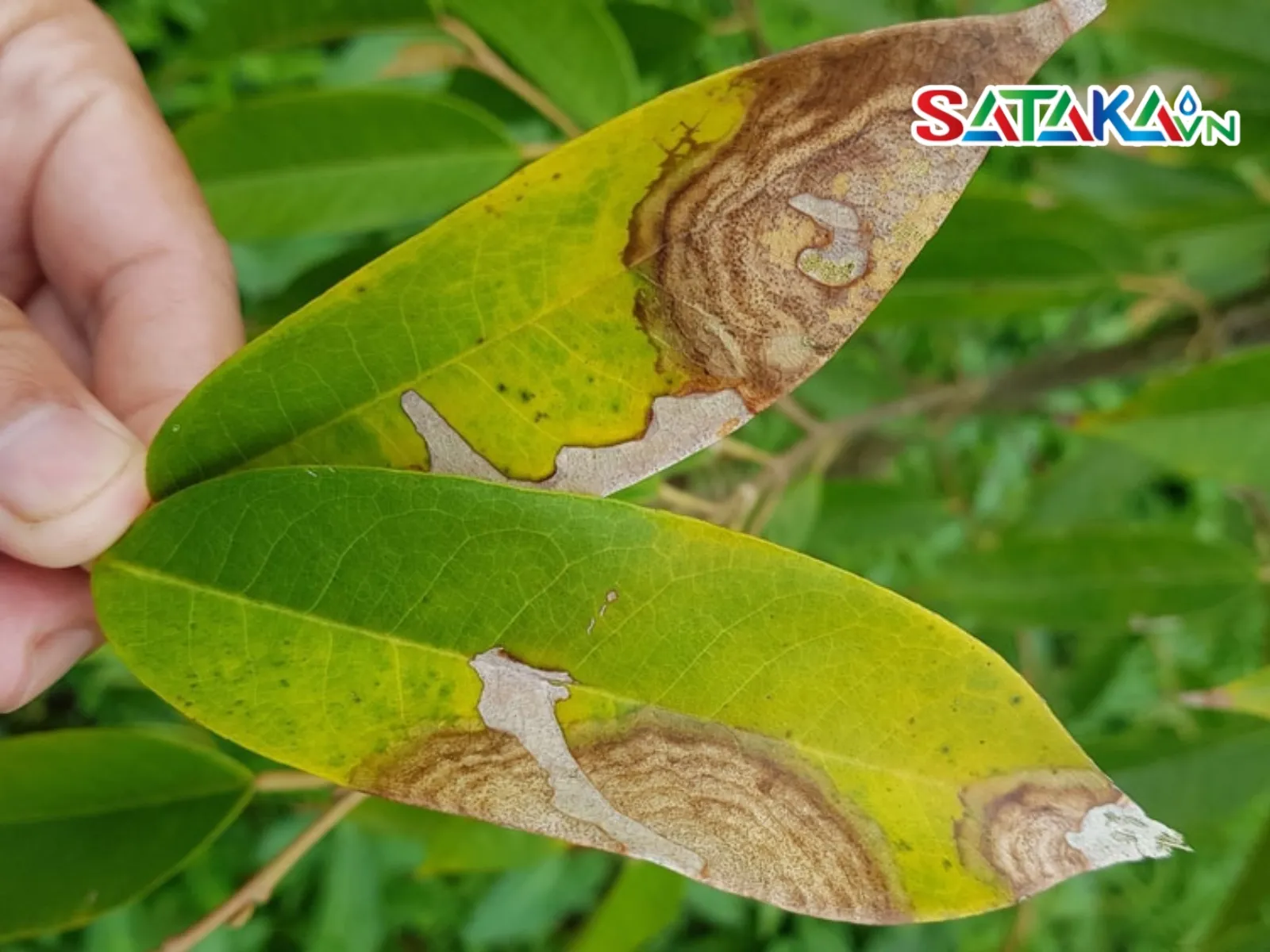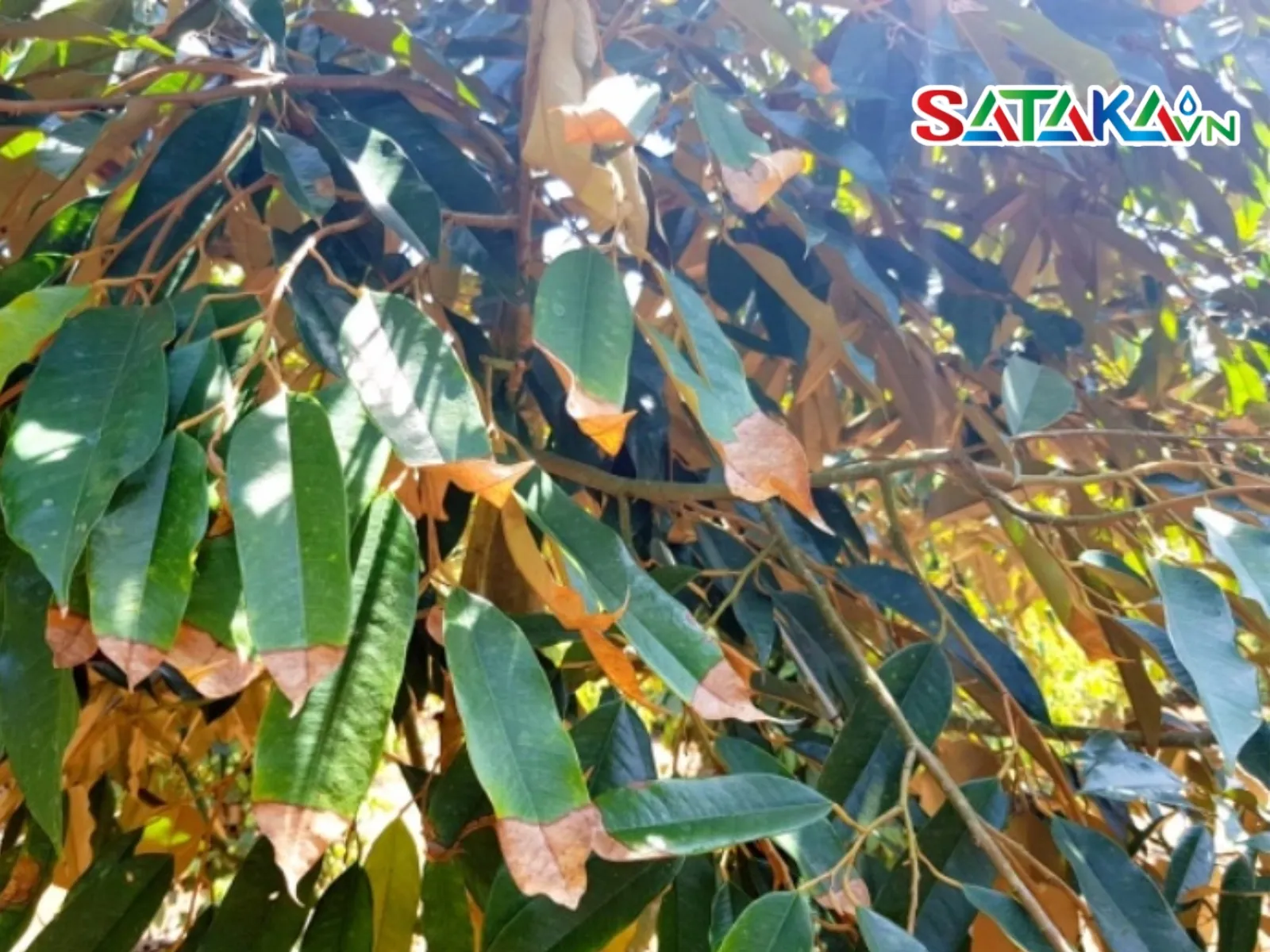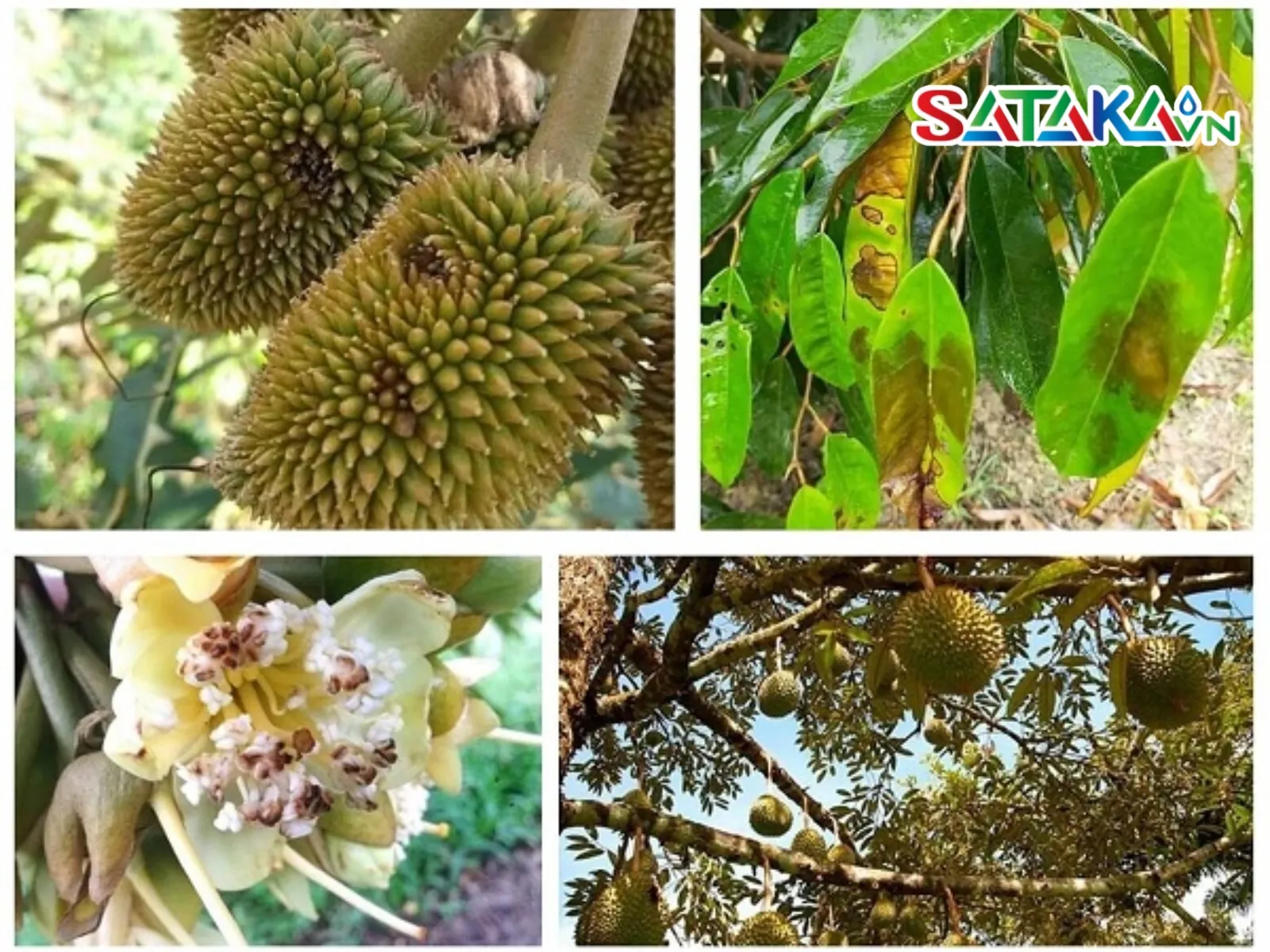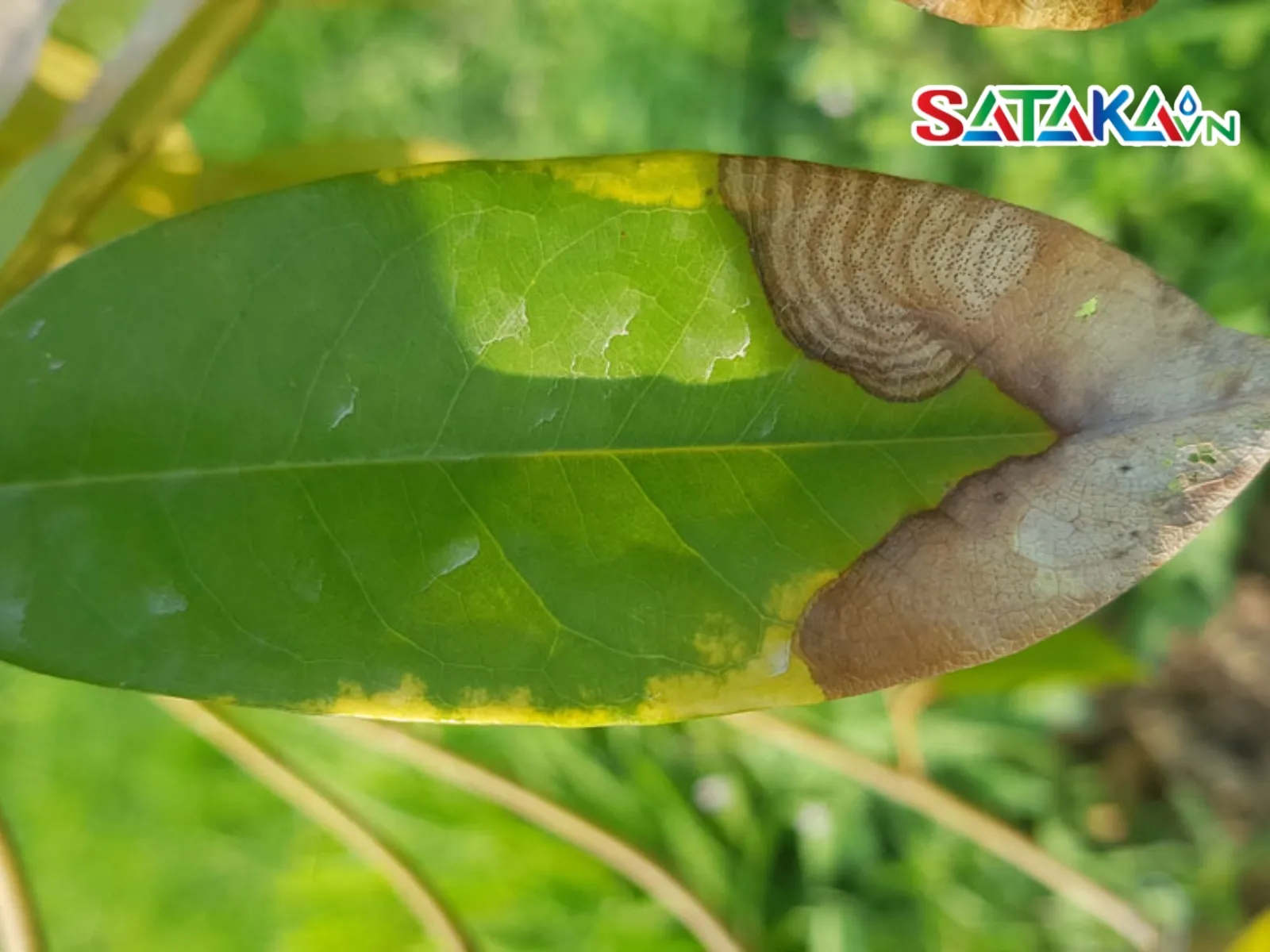Anthracnose on durian, caused by the fungus Colletotrichum, causes dark spots on the skin and flesh of the fruit, affecting fruit quality and yield.
Anthracnose disease in durian is a significant issue that many farmers face. This disease not only reduces yield but also severely impacts fruit quality. To ensure durian trees remain healthy and achieve optimal productivity, it is crucial to understand the causes, symptoms, and effective prevention and treatment methods for anthracnose. Sataka is here to help identify and address anthracnose to protect your durian trees effectively.
Anthracnose in durian is caused by the fungus Colletotrichum spp., which can quickly spread through wind, irrigation water, or rain. Humid environments, poor sunlight exposure, nutrient deficiencies, and unpruned orchards provide ideal conditions for fungal spores to thrive. Young shoots and leaves are particularly vulnerable, making meticulous care during this stage essential for preventing the disease.

Cause of anthracnose disease on durian
Anthracnose disease thrives in high humidity and foggy conditions. It is most prevalent during the growth of young shoots and leaves, as the trees are weaker and more susceptible to damage.
Poorly maintained or improperly managed durian orchards also create a favorable environment for anthracnose. Imbalanced fertilization, excess nitrogen, and a lack of micronutrients weaken the trees, making them more prone to disease. Additionally, dense canopies that are unpruned, shaded, and lacking sunlight increase humidity, promoting fungal growth.

Conditions for disease development
The disease is also common in orchards with poor soil quality, low organic matter, and inadequate soil improvement. Neglecting soil enhancement and not regularly managing soil-borne pathogens further reduce the trees' resistance, leading to outbreaks of anthracnose.
Anthracnose initially appears on leaves, particularly mature or intermediate-aged ones. Early signs include small, circular, concentric spots on the leaf surface, which later darken to brown or black. These fungal spots spread rapidly and can infect all leaves. As the disease progresses, leaves dry, wilt, and fall off, severely weakening the tree and potentially causing death if left untreated.
Anthracnose can also attack durian flowers, causing pale brown or black spots on petals, sepals, and stamens. Infected flowers often drop prematurely, significantly reducing yield. Timely detection and treatment allow the tree to produce new, healthy flowers. Conversely, unchecked disease can result in minimal flowering and significantly lower harvests.

Symptoms of disease on fruit
Infected fruits develop spots at the spines, which then spread to other areas. In severe cases, the middle of the fruit turns black with a yellow halo surrounding the affected area. The disease continues to spread, causing fruits to drop prematurely. Without timely treatment, anthracnose can severely damage both yield and fruit quality, directly impacting farmers' income.
To protect durian trees from anthracnose, farmers should adopt the following preventive measures:

How to prevent anthracnose on durian trees
When durian trees are infected with anthracnose, timely and proper treatment is crucial to protect the crop and minimize losses. Here are effective treatment methods:

Anthracnose disease on durian
Effective treatment of anthracnose in durian requires the use of specialized disease prevention and control products. At Sataka, we offer products such as Acetic Acid, Dimethomorth, Trifloxystrobin, and others. These products are designed to combat fungal diseases, including anthracnose, and protect your crops effectively. By following expert guidance or package instructions, farmers can minimize disease progression and maintain the health of their durian trees.